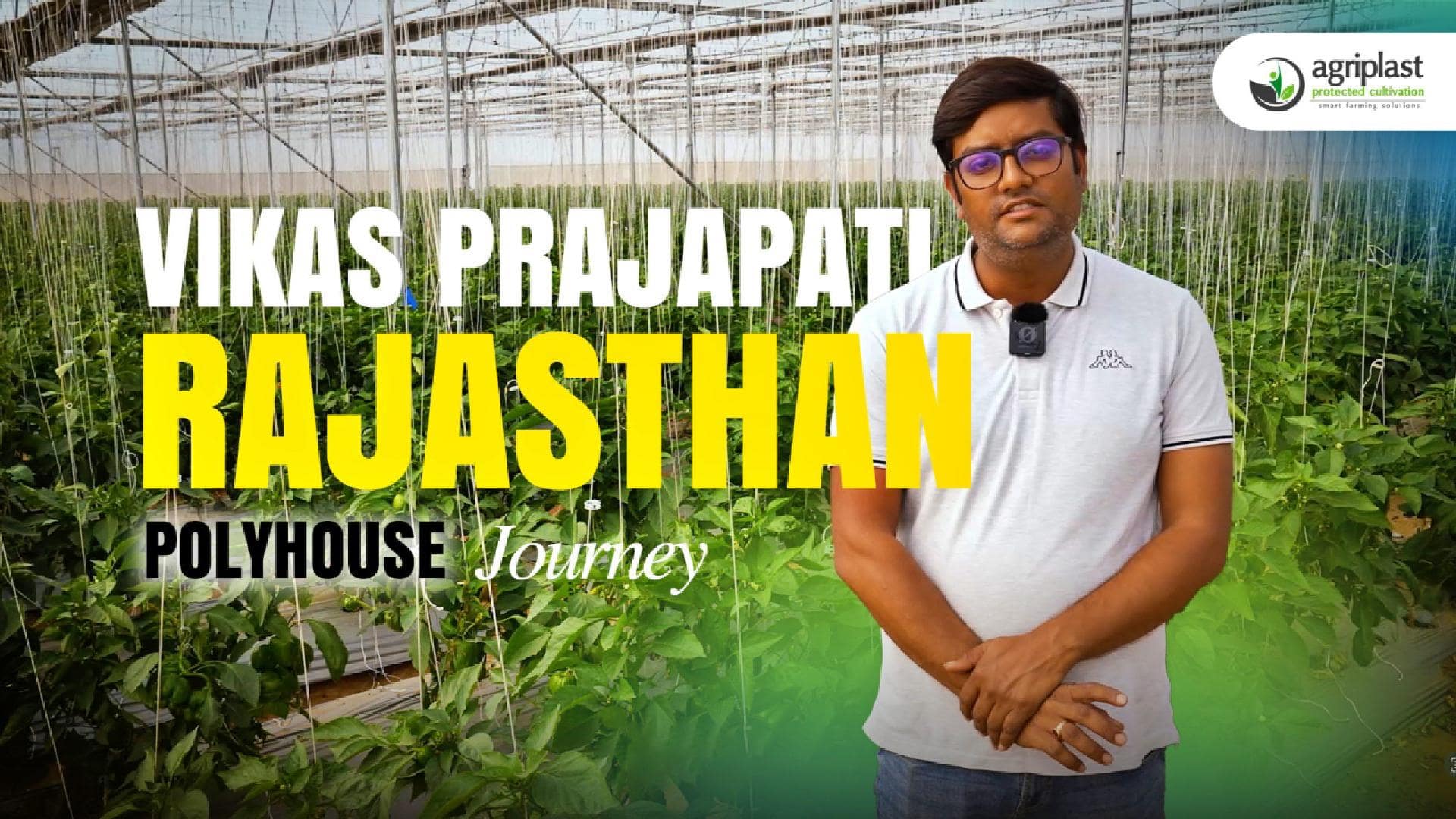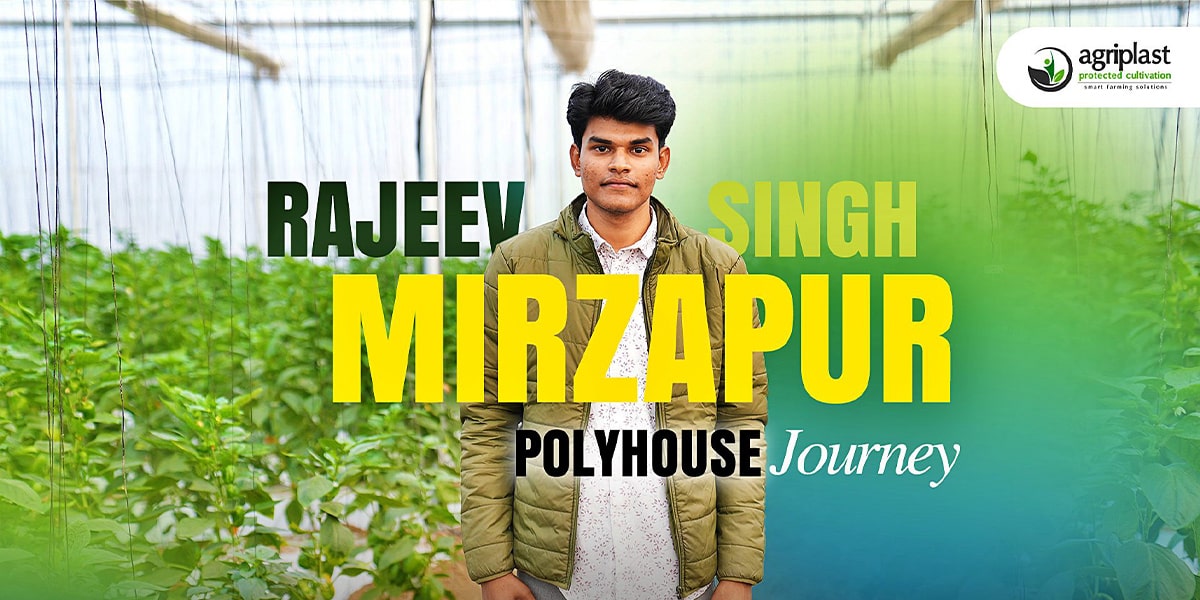Maximize Crop Health and Profitability through Diversification in Agriplast's Structures
The agriculture industry is constantly evolving, searching for sustainable and profitable farming practices that cater to the needs of a growing global population. As a leading polyhouse manufacturer in India, Agriplast Protected Cultivation is dedicated to providing innovative solutions such as polyhouses, greenhouses, and net houses that support modern farmers in maximizing their agricultural potential while minimizing environmental impact.

One crucial factor for achieving sustainable farming within Agriplast's protected cultivation structures is the adoption of crop diversification strategies, such as rotating different crops or growing multiple crops simultaneously. By embracing a diverse cropping approach, farmers can experience numerous benefits, including improved soil health, increased pest and disease resistance, optimized resource utilization, and sky-rocketing profitability.
This article aims to delve into how crop diversification within Agriplast's protected cultivation structures can significantly boost agricultural outcomes for modern farmers. By examining the advantages of this approach and sharing tips on implementing diverse cropping strategies successfully, we hope to provide valuable insights that can help growers utilize Agriplast's structures to their fullest potential, thus fostering sustainable and profitable farming practices that cater to the needs of the modern agricultural landscape.
Enhancing Soil Health through Crop Diversification in Protected Cultivation Structures
Healthy soil is the foundation of a successful, sustainable farming operation. One of the most effective ways to ensure good soil health within Agriplast's protected cultivation structures is through crop diversification. Repeatedly growing the same crop in the same location, or monoculture, takes a toll on soil nutrients, resulting in decreased productivity and increased susceptibility to pests and diseases.
On the other hand, crop diversification - which includes crop rotation and intercropping - helps maintain balanced nutrient levels, prevents soil erosion, and encourages natural pest control. Within Agriplast's structures, growers can rotate different crops based on their nutrient preferences and uptake patterns, ensuring that the soil retains its fertility and health over time. Furthermore, intercropping, or planting multiple crops simultaneously in the same space, can promote synergy between plants, as they support each other in terms of nutrient requirements, growth habits, and root structure.
Strengthening Pest and Disease Resistance through Diversified Cropping Strategies
Pest and disease management is crucial to successful farming, as they can significantly impact crop health and yield. By employing diverse cropping strategies within Agriplast's protected cultivation structures, growers can increase their farm's natural resistance to pests and diseases, reducing the need for chemical intervention and fostering more sustainable agricultural practices.
Rotating different crops helps break the life cycle of pests and diseases, as many of them rely on specific host plants to survive and reproduce. By frequently changing the host plant, growers can disrupt the life cycles of these organisms, thereby reducing their impact on crop health. Similarly, intercropping introduces natural barriers between pest-attracting plants, preventing their easy migration and infestation.
Boosting Profitability with Crop Diversification in Protected Cultivation Environments
A major benefit of crop diversification within Agriplast's protected cultivation structures is the potential for increased profitability, as it enables growers to tap into multiple markets and reduce their reliance on a single crop. By planting a variety of crops with different harvest times, growers can also ensure a consistent income throughout the year while reducing the risks associated with market fluctuations, unpredictable weather conditions, or crop failures.
Furthermore, diversified crop portfolios can help farmers capitalize on the growing consumer demand for a diverse array of fresh, high-quality produce. By delivering a wider range of products and meeting the evolving preferences of their target market, growers can create a competitive advantage and expand their customer base, ultimately enhancing their overall profitability.
Implementing Crop Diversification Strategies within Agriplast's Protected Cultivation Structures
Transitioning to a diversified cropping strategy within Agriplast's protected cultivation structures involves careful planning, research, and adaptability. Here are some useful tips for incorporating crop diversification within your protected cultivation environment:
1. Assess your current farming practices and identify the areas where diversification can be beneficial, such as soil health, pest management, or market opportunities.
2. Research different crop rotation and intercropping options, considering factors such as soil type, nutrient requirements, climate conditions, and market demand for specific crops.
3. Collaborate with agronomists or extension agents who can provide valuable expertise and insights on suitable crops and diversification strategies for your specific situation.
4. Monitor and record data on crop performance, soil health, and pest populations before and after implementing diversification strategies, enabling you to fine-tune and adapt your approach continually.
5. Stay informed about emerging trends, technological advancements, and market demands to ensure that your diversified cropping strategies remain relevant and competitive.
Conclusion
Crop diversification within Agriplast's protected cultivation structures, such as Agriplast Protected Cultivation’s polyhouses and greenhouses, presents a wealth of opportunities for modern farmers to enhance soil health, strengthen pest and disease resistance, and maximize profitability. By understanding the advantages of diversified cropping systems and implementing suitable strategies within their operations, growers can harness the full potential of Agriplast's state-of-the-art cultivation environments, contributing to the ongoing evolution of sustainable and profitable agriculture. Embrace the power of crop diversification within your Agriplast-protected cultivation structure and witness a transformation in the health, resilience, and profitability of your farm.




















